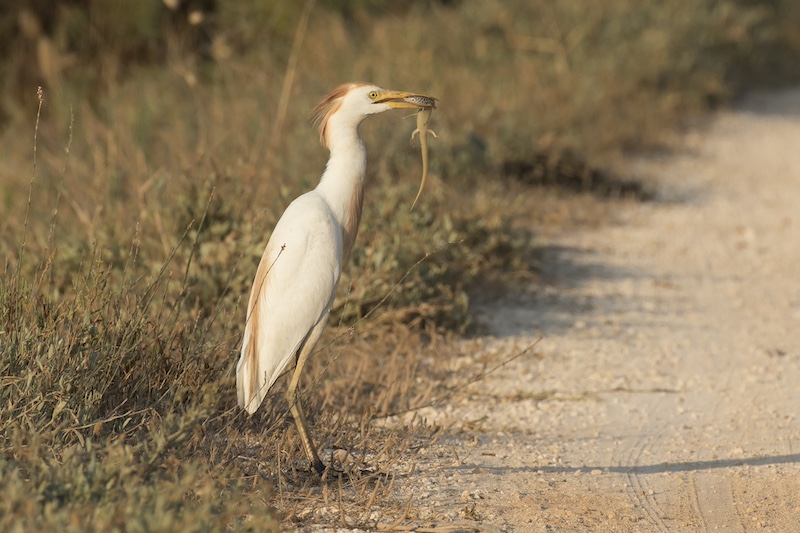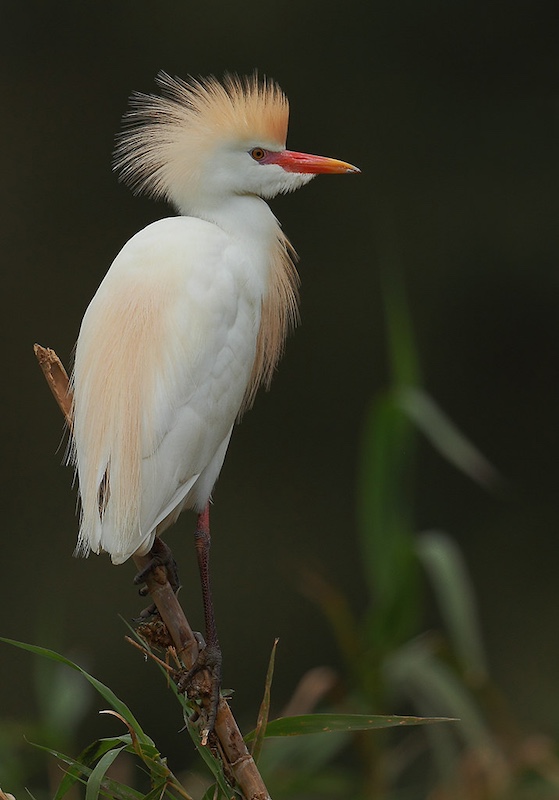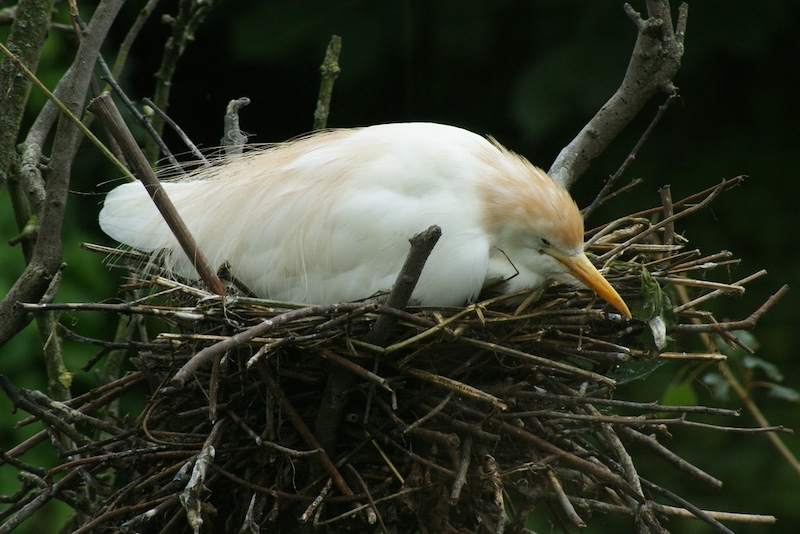Cool facts about the Western Cattle Egret ( Bubulcus ibis)

1. Cattle Egrets are carnivorous and mainly feed on insects such as grasshoppers, crickets, flies, moths, spiders, frogs, and earthworms. The Western Cattle Egret has a broad and flexible diet that occasionally includes other birds. In the Dry Tortugas off the coast of Florida, migrating cattle egrets have been seen hunting migrating warblers.

2. The lifespan in the wild is unknown, however, the oldest Western Cattle Egret on record was at least 17 years old when it was captured and released in Pennsylvania in 1979. It was originally banded in Maryland in 1962.
3. While some populations of Cattle Egrets are migratory, others only show post-breeding dispersal. In Central America, they can be found all year round.
4. They can be found in tropical, subtropical, and warm zones, primarily in agricultural areas near wetlands.
5. Cattle Egrets leave their roost at dawn to search for food and fly in long crooked lines. As night approaches, they return to their roost. Therefore, the best time to observe them is at dawn or dusk.
6. Cattle Egrets are colonial birds, and their nests are usually found near bodies of water. If you are near a body of water, look closely at the trees, and you might see some of them on their nests.
7. During the breeding season, the male displays in a tree in the colony by shaking a twig and raising its bill vertically upwards, among other ritualized behaviors. After three or four days, he gets a mate.
8. The global population of Cattle Egrets is estimated to be 3.8 – 6.7 million individuals, which puts them in the Least Concern group. However, the expansion and establishment of the species have caused it to be classified as an invasive species.
9. Cattle Egrets are native to Africa, and scientists are unsure how they got to South America, but they did and spread throughout the continent.

10. Cattle Egrets are found near cattle and other animals because they get easy food by eating the insects that plague them. In other parts of the world, they can also be seen keeping company with camels, ostriches, rhinos, and tortoises.
11. In 2023, ornithologists classified the Cattle Egret into two species: Western Cattle Egret and Eastern Cattle Egret. The Western Cattle Egret is found in Africa, western Asia, southern Europe, and the Americas, while the Eastern Cattle Egret inhabits southern and eastern Asia, Australia, and New Zealand.
12. Western Cattle Egrets typically follow large animals or machines to forage for invertebrates that are stirred up from the ground. They are also known to fly towards smoke from a fire, catching fleeing insects.
13. Western and Eastern Cattle Egrets are referred to by different names depending on the region. The names usually refer to the grazing animals they work with to forage. Some of the names they are known by include cow cranes, cow herons, cowbirds, elephant birds, rhinoceros egrets, and hippopotamus egrets, depending on the language.
